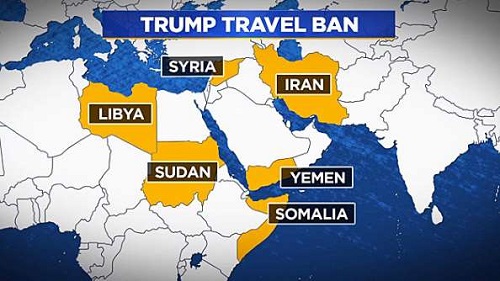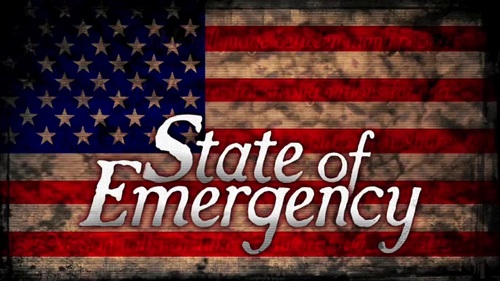Difference Between Travel Ban and State of Emergency
Travel ban and state of emergency are two unique situations decided and implemented by the national government of a given country. The state of emergency is a situation in which the government has the right to perform actions and take decisions it would normally not be allowed to. The state of emergency can be declared only in very specific situations, like natural disaster (i.e. hurricane, earthquake, etc.), war and civil unrest. When the state of emergency is declared, citizens may not be able to enjoy all their rights, and some freedoms (i.e. freedom of movement) may be lifted or limited. The travel ban can be one of the measures part of the state of emergency or can be a separate decision taken by the local government. The two concepts have different implications for the citizens and have different legal definitions.
What is the Travel Ban?
The term travel ban can refer to various situations and can apply to a wide or narrow range for individuals. For instance, in diplomacy, the term persona non grata refers to an unwelcome individual who may be prohibited from remaining in or entering a certain country. In this case, the travel ban only applies to the persona non grata, who is often a foreign diplomat or a politician.
In other cases, the travel ban can be extended to entire communities or to all citizens of a foreign country. The most recent and striking example is the travel ban issued by Donald Trump at the beginning of his mandate as 45th President of the United States. Soon after his election, Trump signed Executive Order 13769, called “Protecting the Nation from Foreign Terrorist Entry into the United States,” which was replaced by Executive Order 13780 in March 2017. The two orders affected seven (later six, when Iraq was removed from the list) Muslim majority countries. In particular, the second order included provisions that:
- Drastically restricted admission of immigrants from Iran, Somalia, Yemen, Syria, Sudan and Libya;
- Suspended admission of refugees (in particular Syrian refugees) for 120 days; and
- Suspended the U.S. Refugee Admission Program (USRAP) for 120 days.
Trump’s travel ban sparked uproar within the United States and all over the world, and several federal judges ruled against the Executive Orders.
What is the State of Emergency?
The state of emergency is a situation in which a national government can take actions and make decisions it would normally not be allowed to. The state of emergency must be officially declared by the government and only applies in specific and extreme situations, including:
- Natural disaster;
- Civil unrest;
- Terrorist threat; and
- War or armed conflict.
Under national and international law, when the state of emergency is declared, individual and collective rights and freedoms can be suspended. For instance, individuals can be held in detention without trial and they can be prevented from leaving or entering the country. However, not all rights can be suspended, and those who cannot be derogated are listed in article 4 of the International Covenant on Civil and Political Rights (ICCPR). Such rights include:
- Right to life;
- Freedom from torture and ill-treatment;
- Freedom from slavery;
- Freedom from arbitrary deprivation of liberty.
According to international law (and in particular to the ICCPR), in order to be valid, the state of emergency must be publicly declared and the United Nations Secretary General must be contacted immediately. The government declaring the state of emergency must also declare the reason for the emergency, the date of beginning, the expected timeframe as well as the rights’ derogation that are foreseen.
Similarities between Travel Ban and State of Emergency
Although they are legally different and have different implications, state of emergency and travel ban may have some common aspects. For instance, the travel ban (or the limitation of freedom of movement) can be one of the consequences of a declared state of emergency. Other similarities include:
- Both are unique and exceptional situations that derogate, suspend or alter individual and/or collective rights for a given period;
- Both are declared and implemented by a government;
- Both may be triggered by threats or dangers to a country or to high-ranked individuals within a country;
- Both limit the right to freedom of movement of individuals, although the state of emergency rarely targets entire countries;
- Both can be lifted and/or suspended by the government; and
- Both can be used as political and diplomatic tools to protect the interests of a given country.
The state of emergency and the travel ban are political and diplomatic tools and they both aim at protecting the interests and the safety of a country. In both cases, limitations to freedom of movement can be imposed to both the citizens of the countries and to foreigners trying to leave or enter the same country.
What is the Difference between Travel Ban and State of Emergency?
Besides few similarities linked to their political and diplomatic nature, the travel ban and the state of emergency are very different. Some of the main differences include:
- The state of emergency affects various individual and collective rights and is the direct response to an external or internal threat. For instance, France declared the state of emergency immediately after the series of terrorist attacks in Paris on 13 November 2015. Conversely, the travel ban only affects the individuals’ freedom of movement – although the inability to enter or exit a country may have various consequences;
- The state of emergency is regulated by national and international law. All national constitutions include provisions regarding the steps to take in the event of terrorist threats, armed conflict or civil unrest. Furthermore, even if it declared the state of emergency, the government cannot suspend or derogate some of the individuals’ inalienable rights, including the right to life. Conversely, the travel ban is often the government’s unilateral decisions, and is regulated according to the country’s legislation. Yet, a travel ban can have international consequences; and
- The Secretary General of the United Nations must be immediately contacted in the event of a state of emergency whereas the involvement of the United Nations and other international organizations is not required in the case of a travel ban.
Travel Ban vs State of Emergency
Building on the differences outlined in the previous section, we can identify few other factors that differentiate the travel ban from the state of emergency.
| Travel Ban | State of Emergency | |
| Duration | If the travel ban is directed towards an individual (generally a diplomat or a politician), it can even be permanent. In other cases, it can last up to few months, but can be reinstated, modified and prolonged. | The duration of the state of emergency should be anticipated when the state of emergency is declared. However, in most cases the deadline is not respected and the state of emergency continues for longer periods. |
| Individuals affected | The travel ban can be directed against a single person or against entire countries. For instance, the Executive Order signed by Donald Trump prevents citizens from six Muslim majority countries from entering the United States for 120 days. | The state of emergency often affects the citizens of the country that declared it, but it can also affect foreigners, immigrants and tourists as it often entails harsher and stricter security measures and vetting procedures. |
| Implications | The travel ban is often a preemptive measure taken to protect the country from possible threats and/or to remove a persona non grata from the country. | The state of emergency is often a reactive measure taken after a terrorist attack or the outburst of civil unrest or armed conflicts. It can be extended even after the threat is gone. |
Summary
The travel ban is an action taken by the government to prevent or restrict movement into and from the country. The ban infringes on the freedom of movement of one or more individuals and can be directed towards a single person (often a diplomat or a foreign politician who would, otherwise, enjoy diplomatic immunity in the country) or towards a broader number of persons. For instance, the travel ban issued recently by U.S. President Trump affects citizens from six Muslim majority countries. The travel ban can be both a preemptive and a reactive measure taken to defend the interests and the security of a given country.
The state of emergency is a situation in which the government has the ability to take actions and make decisions that it would otherwise not be allowed to. The state of emergency is declared in response to terrorist threats, civil unrest and/or armed conflict, and must be officially declared by the country’s government. During the state of emergency, some individual and collective rights can be lifted or derogated, but the fundamental rights outlined in article 4 of the International Covenant on Civil and Political Rights (i.e. right to life, right to freedom from slavery, etc.) cannot be derogated. The state of emergency can affect the right to freedom of movement of citizens and foreigners within the country.
- Difference Between Michelle Obama and Melania - January 29, 2019
- Difference Between Trump and Modi - December 4, 2018
- Difference Between Carbon Tax And Cap And Trade - December 4, 2018
Search DifferenceBetween.net :
Leave a Response
References :
[0]Carlson, Scott N., and Gregory Gisvold. Practical Guide to the international covenant on civil and political rights. Transnational Publishers, 2003.
[1]Crawford, James. "Democracy and International Law." British Yearbook of International Law 64.1 (1994): 113-133.
[2]Liguori, Anna. "Trump 'Muslim Ban' and International Law." Diritti umani e diritto internazionale 1 (2017): 173-188.
[3]Oraá, Jaime. Human rights in states of emergency in international law. Oxford University Press, USA, 1992.
[4]"Image Credit: https://arkansasgopwing.blogspot.in/"
[5]"Image Credit: https://vimeo.com/109751148"


